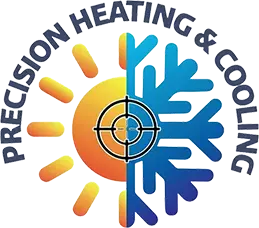A comfortable, healthy living environment is essential for the well-being of you and your family. One crucial aspect of creating such a space is optimizing your home’s heating, ventilation, and air conditioning (HVAC) system to ensure balanced temperature, air circulation, and indoor air quality. One emerging trend in HVAC innovation is zoning, a practice that segments your home into different areas that can be controlled independently to account for temperature preferences, occupancy, and external factors such as sun exposure.
HVAC zoning can offer numerous advantages, including improved indoor air quality through better air circulation, increased comfort by maintaining consistent temperatures across various rooms, and reduced energy consumption by directing heating or cooling only to occupied areas. Zoning can be achieved through various means, such as dampers in the ductwork, dedicated thermostats for each zone, or even the installation of multiple smaller HVAC systems. Regardless of the approach, the goal remains the same: optimizing your home’s temperature, air circulation, and indoor air quality for enhanced comfort, better health, and energy efficiency.
Explore the benefits of HVAC zoning, explain how it can enhance indoor air quality, comfort, and energy efficiency, and introduce you to the skilled professionals who can design and install a customized zoning system tailored to your home’s unique needs.
The Benefits of HVAC Zoning
HVAC zoning offers an array of advantages to homeowners seeking better control over their indoor environment. By dividing your home into different zones with independent temperature settings and control systems, you can enjoy numerous benefits, including:
1. Enhanced Comfort: Different rooms or areas in your home may have varying temperature needs due to factors such as sun exposure or airflow. Zoning allows you to cater to these specific needs, maintaining consistent comfort throughout your home.
2. Improved Air Quality: By managing air circulation within individual zones, you can better control dust, allergens, and pollutants that may negatively affect indoor air quality.
3. Increased Energy Efficiency: Zoning reduces your HVAC system’s energy consumption by directing heating or cooling only to the occupied zones, resulting in potential energy savings and reduced utility costs.
4. Customizability: HVAC zoning can be tailored to your home’s unique layout and requirements, ensuring a personalized solution that meets your needs.
Zoning Technologies and Methods
There are various technologies and methods available for implementing an efficient HVAC zoning system, including:
1. Dampers and Ductwork: Installing dampers within your existing ductwork allows you to control airflow to specific areas, as needed. These motorized devices can be opened or closed to direct heating or cooling to different zones, regulated by individual thermostats.
2. Multi-Unit Systems: Another zoning approach involves installing separate HVAC systems for different areas of your home, providing each zone with its dedicated heating or cooling source. This method may be more suitable for larger homes or those with unique architectural designs.
3. Smart Thermostats: Advanced thermostats can integrate with your home’s zoning system, learning your preferences and adjusting temperatures accordingly. These devices can also provide insights and suggestions for optimizing energy efficiency and comfort.
Best Practices for HVAC Zoning
To achieve optimal results with your HVAC zoning system, it’s essential to consider various factors and adhere to best practices. Some important considerations include:
1. Proper Zoning Design: Assess your home’s layout and requirements to design an efficient zoning system that accommodates different temperature needs, occupancy patterns, and external influences such as sun exposure.
2. Regular System Maintenance: Like any HVAC system, maintaining your zoned solution is crucial for ensuring optimal performance, air quality, and energy efficiency. Regular maintenance tasks may include cleaning or replacing filters, inspecting dampers and ducts, and keeping thermostats calibrated.
3. Smart Controls Integration: Utilize smart thermostats and controls to streamline your HVAC zoning system, optimizing comfort and efficiency by automating temperature adjustments based on preferences, occupancy, and energy use patterns.
Working with Our Professionals
Designing, installing, and maintaining an HVAC zoning system can be a complex task that requires expert knowledge and experience. Our team is dedicated to providing comprehensive zoning services to help you achieve the ideal balance of comfort, air quality, and energy efficiency in your home. When you partner with us, you can expect:
1. Expert Assessment: We’ll evaluate your home’s layout, existing HVAC system, and unique requirements to determine the ideal zoning solution that caters to your specific needs.
2. Customized Design: We’ll design a tailored zoning system that incorporates the most appropriate technologies and methods for your home, ensuring a personalized approach that optimizes performance.
3. Professional Installation: Our skilled technicians will seamlessly integrate your zoning system into your existing HVAC infrastructure, providing reliable installation services that guarantee optimal results.
Conclusion
HVAC zoning is an innovative solution that can greatly enhance your home’s comfort, indoor air quality, and energy efficiency. By understanding the benefits of zoning and partnering with our professionals, you can create a customized zoning system tailored to your home’s unique requirements.
Don’t wait any longer to experience the advantages of HVAC zoning. Contact Precision Heating and Cooling today to learn more about our HVAC services in San Jose, CA, and discover how we can help you achieve the perfect balance in your home!







